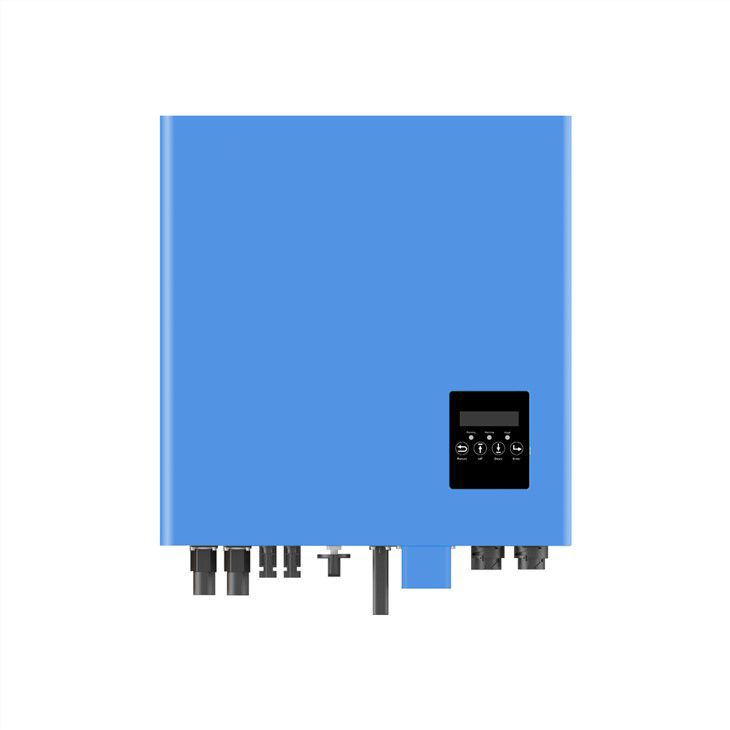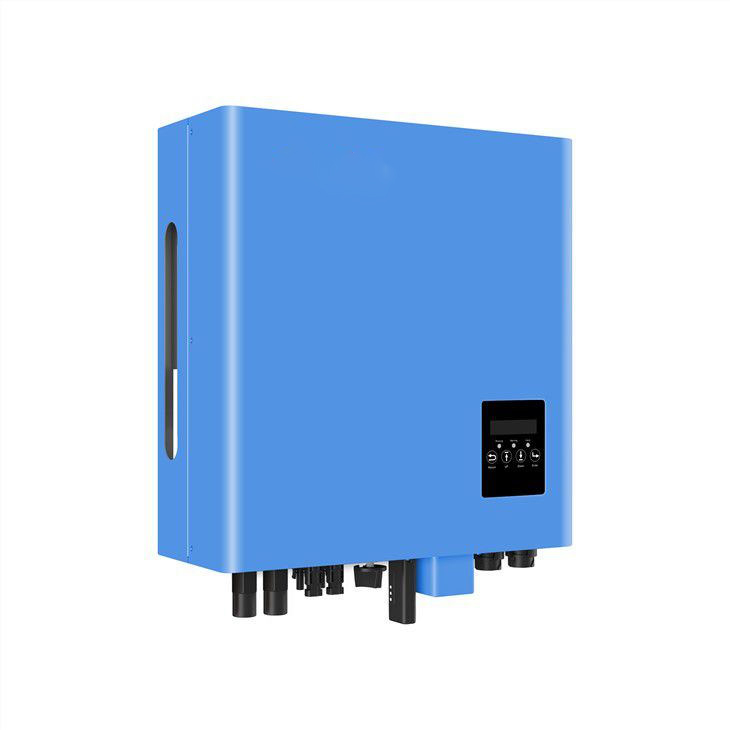Description


The 3kw Hybrid Solar Power Inverter with nominal AC output power 3kW can work with a battery bank as backup power to make the best use of time-of-use policy or to keep a continuous power supply in case of grid outage or poor wind turbine/diesel generator performance, which may help end users maximize self-consumption and enhance energy independence.
Specifications
| Item | Parameters |
| Battery Parameters | |
| Compatible Battery Type | Lithium-ion, Lead-acid |
| Nominal Battery Voltage | 48V/51.2V |
| Battery Voltage Range | 40V~60V |
| Capacity of Battery | 2~20KWh |
| Maximum Charging/Discharging Current | 66A/66A |
| Maximum Charging/Discharging Power | 3600W/3600W |
| Max. Charging Voltage | 59V |
| Charging Curve (Lithium-ion) | 3stages |
| Charging Curve (Lead-acid) | 3stages |
| Depth of Discharge (Lithium-ion/Lead-acid) | 80%/50% |
| Input DC (PV Side) | |
| Max. DC Input Power | 6600W |
| Max. DC Input Power for Single MPPT | 4000W |
| DC Input Voltage Range | 100V~550V |
| Nominal DC Input Voltage | 360V |
| MPPT Operating Voltage Range | 100V~500V |
| Full Power MPPT Voltage Range | 140V~440 |
| Start-up Voltage (On-grid mode) | 120V |
| Max. DC Input Current | 13A/13A |
| Max. DC Input Short Current | 13.7A/13.7A |
| MPPT Number/ (Strings per MPPT) | 2(1+1) |
| Output AC(Grid) | |
| Nominal Output Power | 3000W |
| Max. Output Power | 3000VA |
| Nominal AC Voltage | 230V |
| Operation Phase | Single Phase |
| Max. Input/Output Current | 15A |
| Nominal AC Frequency | 50Hz/60Hz |
| THDI | <3% |
| Power Factor | >0.99@rated power -0.8~+0.8 adjustable |
| UPS Output - with Battery | |
| UPS Max. Output Power without Solar | 3000W |
| UPS Max. Output Power with Solar | 3000W |
| UPS Nominal Output Voltage | 230V |
| UPS Nominal Output Frequency | 50Hz/60Hz |
| UPS Nominal Output Current | 13A |
| Peak Power | 4500W,30s |
| THDV | <3%@R-load |
| Switching Time | 10ms |
| Efficiency | |
| MPPT Efficiency | 99.90% |
| Max. Efficiency | 97.90% |
| EU Efficiency | 97.50% |
| Battery Charging Efficiency | 94.50% |
| Battery Discharging Efficiency | 94.50% |
| Protection | |
| Reverse Polarity Protection | YES |
| Anti-islanding Protection | YES |
| AC Short-circuit Protection | YES |
| Leakage Current Protection | YES |
| Grid Monitoring | YES |
| DC Switch | YES |
| Ingress Protect Degree | IP65/NEMA4X |
| PV Insulation Detection | YES |
| Ground Fault Monitoring | YES |
| Over Current Protection | YES |
| Over Voltage Protection | YES |
| Battery Soft Start Protection | YES |
| SPD Protection | YES |
| General Data | |
| Dimension(mm) | 455W*476 (565) H*181D |
| Weight | 20kg |
| Display | Color LCD+LED |
| Topology | Transformerless (Solar), HF(Battery) |
| Ambient Temperature Range | -25~60℃ |
| Standby Losses | <5W |
| Cooling | Natural Convection |
| Relative Humidity Range | 0~100% |
| Max. Operating Altitude | 2000m |
| Noise | <25dB |
| Communication | RS485, Wi-Fi, CAN |
| Warranty | 5 Years |
| Standard & Certification | |
| EMC | EN61000-6-1, EN61000-6-2, EN61000-6-3 |
| Safety Standard | IEC62109-1, IEC62109-2, IEC62040 |
| Grid Standards |
AS4777, VDE0126, VDE-AR-N4105,
G83, G59, EN50438, EN50439,
CE10-21, CE10-16, NRS097
|